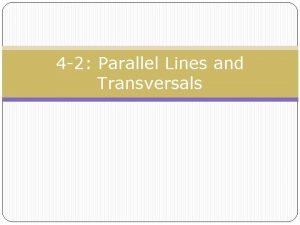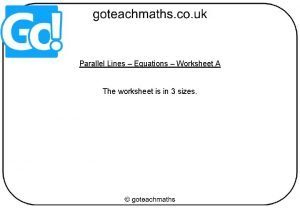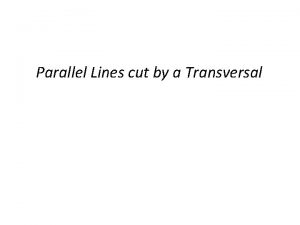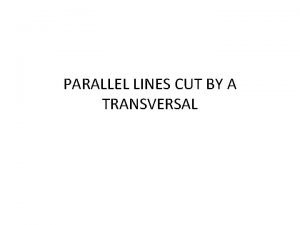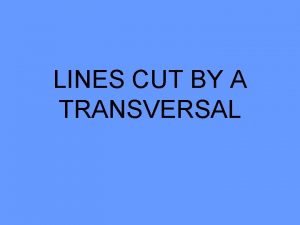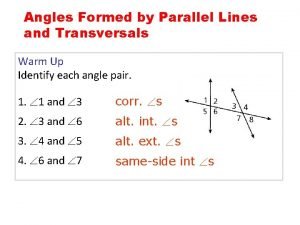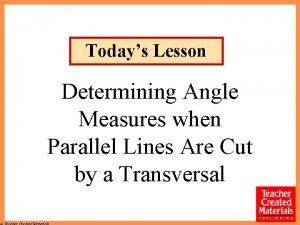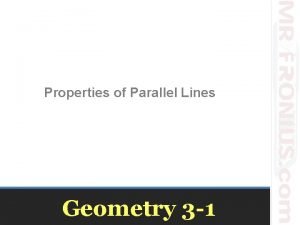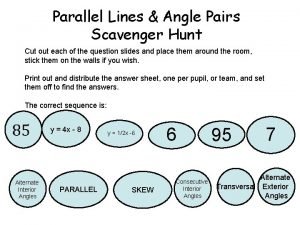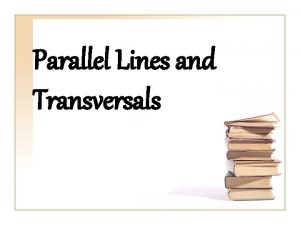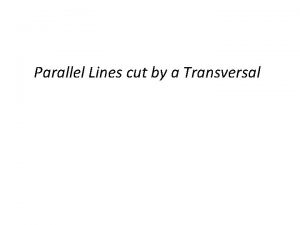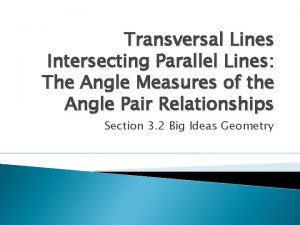Transversal and parallel lines Year 7 Parallel Lines








- Slides: 8

Transversal and parallel lines Year 7

Parallel Lines You may already have a rough idea of what the word parallel means. Note how it is spelt – with two ‘l’s in the middle but only one ‘l’ at the end. You may have heard about parallel parking, or the parallel bars in gymnastics. In mathematics, the word is usually applied to describe a certain arrangement of lines.

Parallel Lines � Look at the two lines in the diagram. They are both straight lines – they are not curved. Also, if we were to extend both lines – keep drawing along them in both directions to make them longer, they would never cross each other. These two characteristics mean that these two lines are parallel. �Parallel lines are straight lines that never cross each other, no matter how long you draw them.

Transversal Lines �Transversal lines are straight lines that cross over or intersect with two or more parallel lines.

Transversal Lines In this diagram there are two parallel lines and a transversal line. There also 8 angles where the transversal line cuts across the parallel lines – angles a, b, c, d, e, f, g, and h.

Corresponding Angles One of the neat things about transversal lines is that the areas where they intersect each parallel line all look the same. This diagram shows the two circled regions and how they are exactly the same in their layout: Look at angle ‘a’ and angle ‘e’ – they look like they could be the same size. In fact, they are actually exactly the same size. In mathematical terms, they are called corresponding angles. The same applies for angles ‘b’ and ‘f’. Since the two intersections are exactly the same, and since ‘b’ and ‘f’ are in the same part of the intersection, they are also known as corresponding angles, and are equal. Same goes for ‘c’ and ‘g’, and also for ‘d’ and ‘h’.

Alternate angles Interior alternate angles can be found by looking for the letter Z in the diagram:

Alternate angles External alternate angles can be found by looking for the letter ‘C’, either forwards or backwards:
 Lesson 4-2 transversals and parallel lines
Lesson 4-2 transversals and parallel lines Parallel lines and transversals worksheet
Parallel lines and transversals worksheet Parallel lines cut by a transversal
Parallel lines cut by a transversal Alternate exterior angles are congruent
Alternate exterior angles are congruent Parallel lines vocabulary
Parallel lines vocabulary Parallel lines cut by a transversal solving equations
Parallel lines cut by a transversal solving equations 110/2
110/2 Properties of parallel lines
Properties of parallel lines Angle relationships scavenger hunt answer key
Angle relationships scavenger hunt answer key
